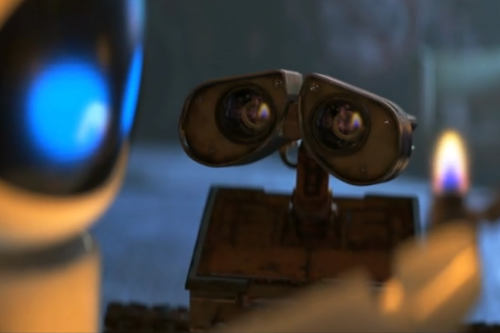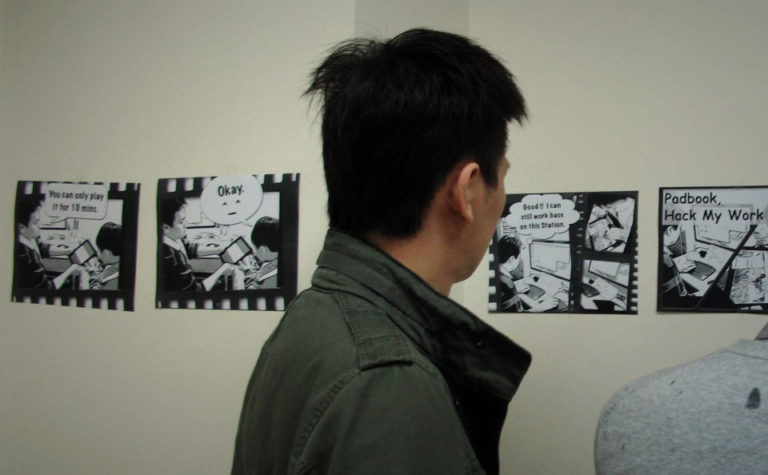我們都在故事裡軋了一角。~曾憲鈺
故事人人都愛
人人都喜歡聽故事,也喜歡說故事。故事幫助我們更瞭解那個人、那個環境、那個我們未知的意義。故事能夠跨越過去、現在和未來的時間,打破空間的障礙,讓我們不必真的在那個時空中也能體會故事裡各角色的心情。 Andrew Stanton 所編寫的〈玩具總動員〉 (Toy Story)、〈蟲蟲危機〉(A Bug’s Life) 和〈瓦力〉(WALL-E) 的故事,都能觸動人心。我在 TED 中看到 Andrew Stanton 談到好故事的創造,有些學習:
Andrew Stanton : The clues to a great story
說個「跟我有關」的故事
人人都喜歡聽故事,但「喜歡聽」是因為這是「跟我有關」的故事。跟我無關的故事,往往會被忽略,或者有聽到沒聽進。
Andrew Stanton 說:
We all know what it’s like to not care. You’ve gone through hundreds of TV channels, just switching channel after channel, and then suddenly you actually stop on one. It’s already halfway over, but something’s caught you and you’re drawn in and you care. That’s not by chance, that’s by design.
我們都知道毫不在乎是什麼感覺。你一個接一個地轉換了數百個電視頻道,然後突然停在某個頻道,雖然它已播放了一半,但某些東西吸引你,讓你著迷、讓你關心。這並非偶然,而是經過精心設計。
讓我也參與其中
當我和團隊在開發使用者體驗創新流程 (User eXperience Innovation Process) 也同時開發新產品概念時,我常常用「讓使用者『演出來』和『說出來』」這種手法。
就像 Andrew Stanton 說:
… the audience actually wants to work for their meal. They just don’t want to know that they’re doing that. That’s your job as a storyteller, is to hide the fact that you’re making them work for their meal.
… 觀眾希望能自己準備食物,他們只是不知道自己正在這麼做。那就是身為說故事者的任務 - 隱瞞你讓他們自己準備食物的事實。
因此我準備了許多圖片、紙卡、珍珠板做的產品模型,甚至將「說故事現場」布置成賣場或客廳,讓參與者在我把前情提要說完之後,就不知不覺地演起戲來,開始說他們的故事。
Andrew Stanton 還說:
We’re born problem solvers. We’re compelled to deduce and to deduct, because that’s what we do in real life.
我們天生就有解決問題的傾向。我們會不自覺地演繹和歸納,因為我們在現實生活中也是這麼做。
我不是心理學專家,但我知道「完形心理」被廣泛運用在生活中。我甚至用實體版的「完形」來解釋:「人們想要完整的『故事』。」
Andrew Stanton 舉了個例子:
It’s this well-organized absence of information that draws us in.
正是這種不完整卻看似有組織的訊息吸引了我們。
There’s a reason that we’re all attracted to an infant or a puppy. It’s not just that they’re damn cute; it’s because they can’t completely express what they’re thinking and what their intentions are.
我們被嬰兒或小狗吸引是有原因的,不單是因他們可愛,更是因為他們無法完整表達自己的想法和意圖。
And it’s like a magnet. We can’t stop ourselves from wanting to complete the sentence and fill it in.
這就像一塊磁鐵,吸引我們忍不住想完成這個句子。
這是真的!尤其是當我有意識地觀察我和我家貓咪的互動就能理解。我 (大部分飼主都是) 會自言自語說:「肚子餓了嗎?要吃麼?」然後拿出零食來;「幹嘛躲在箱子裡?」然後拿出逗貓棒引誘貓咪…
不要給我答案,答案我有
Andrew Stanton 有個「二加二理論 (theory of two plus two)」,他這麼說:
Make the audience put things together. Don’t give them four, give them two plus two.
讓觀眾自己將劇情組合起來。不要給他們答案四,給他們二加二。
The elements you provide and the order you place them in is crucial to whether you succeed or fail at engaging the audience.
你所提供的劇情元素和其順序,對於你能否成功地吸引觀眾投入,至為關鍵。
無論是策略規劃或創新工作坊,當我在引導團隊時,也常會用這種「二加二」的手法。只要預備足夠的元素或部件,引起動機,然後大夥兒就能分段練習了。
跟著主軸發展故事
Andrew Stanton 從表演老師 Judith Weston 學到:
… all well-drawn characters have a spine. And the idea is that the character has an inner motor, a dominant, unconscious goal that they’re striving for, an itch that they can’t scratch.
… 所有出色的角色都有個主軸。主軸是指在這些角色裡蘊含著一種內在驅動力、一個能夠主導一切且在潛意識裡竭力追求的目標、一個擺脫不掉的慾念。
例如艾爾.帕西諾在《教父》中飾演 Michael Corleone,他的主軸就是討好他的父親,以致於他所有的行為、決定,都一直沿著這主軸發展,即使父親過世後,他依然遵循著這個思維。
Andrew Stanton 說:
Wall-E’s was to find the beauty. Marlin’s, the father in “Finding Nemo,” was to prevent harm. And Woody’s was to do what was best for his child.
《瓦力》是對美的追求;《海底總動員》中的父親馬林追求的是避免傷害;《玩具總動員》中,胡迪追求的是對主人 (Andy) 最好的事。
角色有主軸,故事有主軸,主軸可以轉彎,但不能硬拗。我們接受神鵰大俠楊過的白頭,是因為我們先接受了前面的故事鋪陳。不要再搞「失憶」、「變臉」了。
結語
故事人人都愛聽,也愛說。其實,我們每天都生活在故事裡。
故事的不可預測性就像我們接下來的「今天」和「明天」,我們都按著自己的主軸 (本性) 而活 (追求),只是結果尚不可知而已。



![[極短篇] 三個人](https://innofaci.com/wp-content/uploads/2012/12/極短篇.png)
